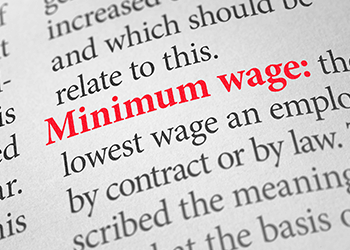The minimum wage continues to be a sensitive issue in today’s retail environment, both for the employer and the employees who rely on its very existence. Although the National Minimum Wage remains static ($7.25 since July 2009), 12 states so far have raised their own minimum wage (including New York, Oregon, Alaska, Arizona, Vermont, Connecticut, California, Massachusetts, Washington State and Washington D.C.). And with some cities raising them to even higher levels, many businesses will undoubtedly face higher labor costs in 2017. So how can these be offset?
First, let’s look at the impact of these rising labor costs. Research from the Congressional Budget Office suggests that raising the minimum wage by even a moderate amount would hinder growth, at least for the short term.
Another unfortunate by-product of a minimum wage uptick, according to a 2015 Purdue University study, is that it would be the catalyst to raising stock/inventory prices, a development that often leads to negative customer feedback and subsequently decreasing sales.
Restaurants surveyed in a Harvard Business School study found that increased minimum wages were a stimulant in the eventual closing of the businesses themselves. Restaurants, with a $1 increase in its minimum wage, found a 14% increase in the likelihood of business-closure.
Any future across-the-board minimum wage rise to $9/hour from the current $7.25 is not only estimated to cost upwards of 100,000 national retail jobs according to the Congressional Budget Office, but it would subsequently leave businesses with considerably higher labor costs.
With businesses now paying employees more in 2017 for the same work they did in 2016, the logical reaction has been a move toward technology, particularly in areas where the larger amounts of labor hours are typically spent. And there is no denying that one of the chief time expenses in today’s retail and restaurant environments is managing cash.
Investment in cash management technology is certainly on the “to-do lists” of retail operations managers, loss prevention supervisors and CFOs throughout the country. Some 85% of businesses we polled are looking to invest in cash management technologies in the near future. And some 58% of finance executives hope to make that reduction in cash processing costs within 12 months.
Efficiency and accuracy are the key components of proper cash management. Yet they are the areas that require the most time and attention from your staff. If employees and managers can shift the considerable time they spend on cash handling to revenue-generating activities like working the floor and yes, good old ‘customer service,’ the hikes in minimum wage can be offset. And in a most productive way too.
We’re not sure who first coined the phrase “time is money,” but we’re pretty sure it was a manager. Saving time in the workplace, particularly during laborious tasks such as cash counting, can definitely yield serious savings. With Tellermate’s user-friendly line of cash counters, intelligent cash drawers, and cash office software, you can increase your profits by deterring fraudulent activity, detecting honest mistakes, providing real-time cash management info, and saving countless hours in making your cash transactions more efficient, secure, and profitable.
Looking to counterbalance rising labor costs in your business? Download the Cash Management Jungle ebook to discover how cash management technology can streamline processes and drive efficiency.